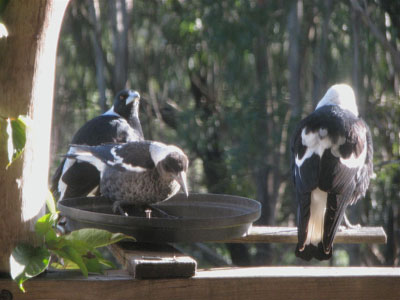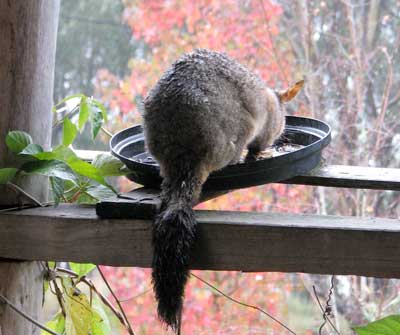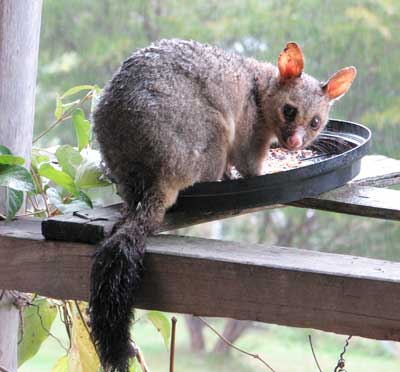 My erstwhile Wood Duck mother has found herself a special place for her daily beauty ritual.
My erstwhile Wood Duck mother has found herself a special place for her daily beauty ritual.
Not far from my morning coffee spot window there is a large rock, unearthed when building years ago and too big to be easily moved. It awaits inspiration — and energy.
Now each morning Madame Duck comes and stands on it, facing the newly risen sun, and well above the damp grass and its long seed spikes.
She has the ability to turn her head completely back to front – and she does, poking and scouring quite fiercely with her beak under each wing and down her back, fluffing up her feathers and shaking herself to dislodge any small loose feathers.
 Then she adds a deposit to the small black and white pile on the rock. She turns and looks me in the eye — ‘Can’t a girl get any privacy round here?’
Then she adds a deposit to the small black and white pile on the rock. She turns and looks me in the eye — ‘Can’t a girl get any privacy round here?’
No fear — not when you pick an ablutions rock in such easy view.
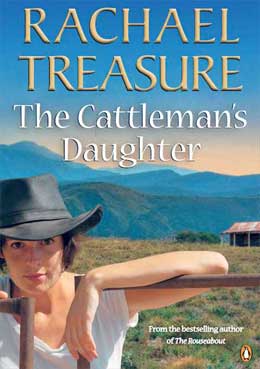 I have just read Tasmanian writer Rachael Treasure’s new book, The Cattleman’s Daughter. To my mind it’s her best book yet, with clear signs of the maturing writer as well as woman.
I have just read Tasmanian writer Rachael Treasure’s new book, The Cattleman’s Daughter. To my mind it’s her best book yet, with clear signs of the maturing writer as well as woman. When I first saw the Maned Wood Duck family down near the dam there were five ducklings. The next sighting wasn’t until a week later; they were waddling up the track towards the other dam, so on open ground — and I could only see three babies.
When I first saw the Maned Wood Duck family down near the dam there were five ducklings. The next sighting wasn’t until a week later; they were waddling up the track towards the other dam, so on open ground — and I could only see three babies.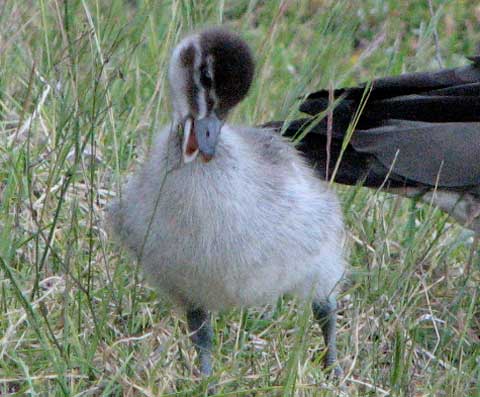 The duckling is as fluffy and cute as a duckling can be, with quaint antics like standing on one leg, stretching the other out behind and shaking it as if part of a dance routine
The duckling is as fluffy and cute as a duckling can be, with quaint antics like standing on one leg, stretching the other out behind and shaking it as if part of a dance routine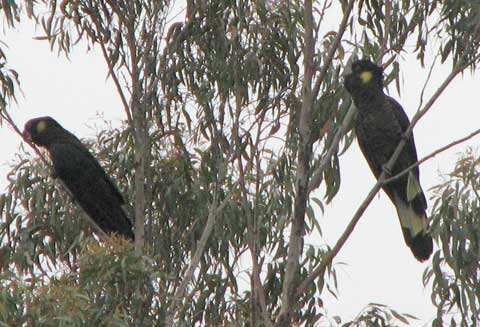 A bit of wet weather — and all hell broke loose in the forest around me.
A bit of wet weather — and all hell broke loose in the forest around me.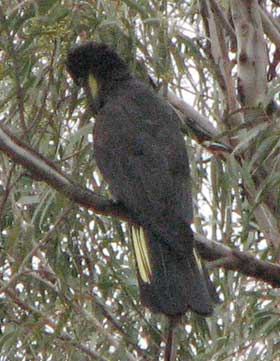 There were perhaps eight Yellow-tailed Black Cockatoos, swapping trees, snapping twigs, screeching across the clearing at full unmusical volume.
There were perhaps eight Yellow-tailed Black Cockatoos, swapping trees, snapping twigs, screeching across the clearing at full unmusical volume.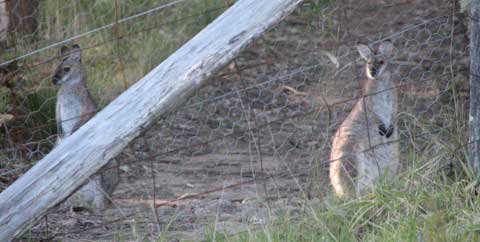 When you live in the country it’s always a boon to have a passenger to act as as gategirl or gateboy, to open the many gates so you don’t have to yank on the hand brake and get out to do it yourself.
When you live in the country it’s always a boon to have a passenger to act as as gategirl or gateboy, to open the many gates so you don’t have to yank on the hand brake and get out to do it yourself. A pair of wood ducks have installed themselves in my yard, which they like because it has a small dam close by. I come across the couple in odd places and at odd times.
A pair of wood ducks have installed themselves in my yard, which they like because it has a small dam close by. I come across the couple in odd places and at odd times.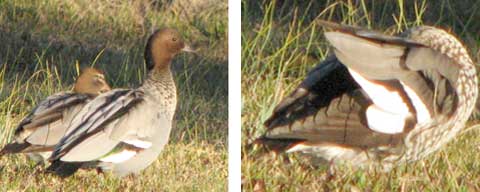 As he patrolled around her, she awoke and began to groom herself up for the day, fluffing her elegant feathers and ferretting amongst them.
As he patrolled around her, she awoke and began to groom herself up for the day, fluffing her elegant feathers and ferretting amongst them.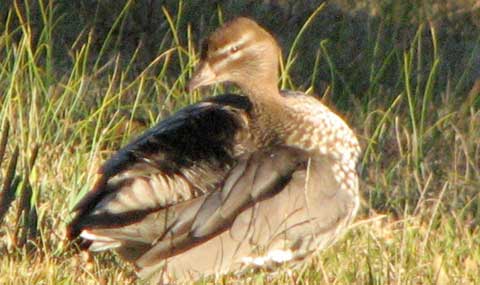 Finally, satisfied with her apearance, she gives him a coy look — ‘Ready, dear.’ — they begin the day’s grazing. Incidentally, they also fertilise the yard, as I am constantly treading in it!
Finally, satisfied with her apearance, she gives him a coy look — ‘Ready, dear.’ — they begin the day’s grazing. Incidentally, they also fertilise the yard, as I am constantly treading in it!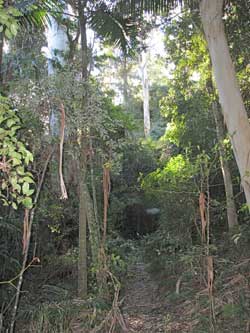 They tempt you to walk into the wild side, but with safety, and to experience the greatly varied vegetation of the surrounding bush.
They tempt you to walk into the wild side, but with safety, and to experience the greatly varied vegetation of the surrounding bush. Robert has chosen the paths to take you through hillside forests and gully jungles, past luminous blue gums and thriving cabbage tree palms, the oldest, wartiest paperbark tree I have ever seen…
Robert has chosen the paths to take you through hillside forests and gully jungles, past luminous blue gums and thriving cabbage tree palms, the oldest, wartiest paperbark tree I have ever seen…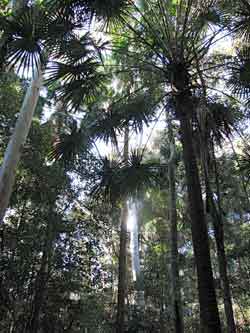 …and battle-scarred eucalypts so tall I can hardly see their tops.
…and battle-scarred eucalypts so tall I can hardly see their tops.
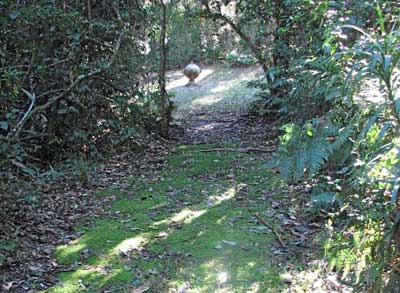
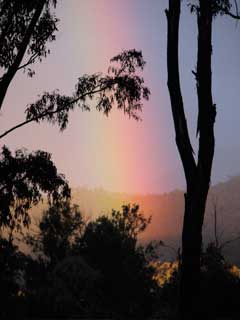 My first day camping in the Warrumbungle National Park ended with showers and a stunning misty sunset, complete with rainbow.
My first day camping in the Warrumbungle National Park ended with showers and a stunning misty sunset, complete with rainbow. 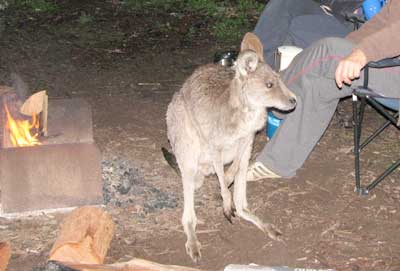
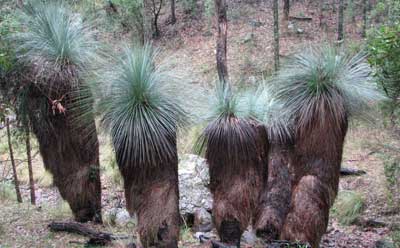
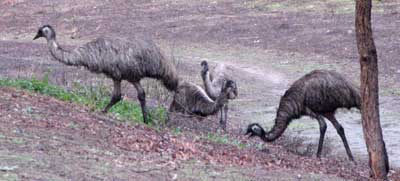

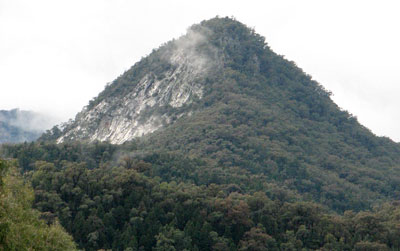

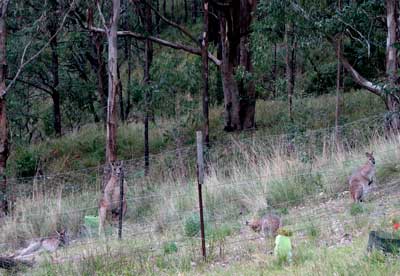
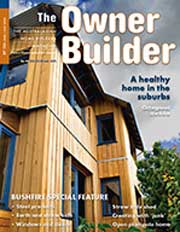 As many of you know, I regularly contribute articles and photos to The Owner Builder magazine. They also stock my books in their online bookshop.
As many of you know, I regularly contribute articles and photos to The Owner Builder magazine. They also stock my books in their online bookshop.
